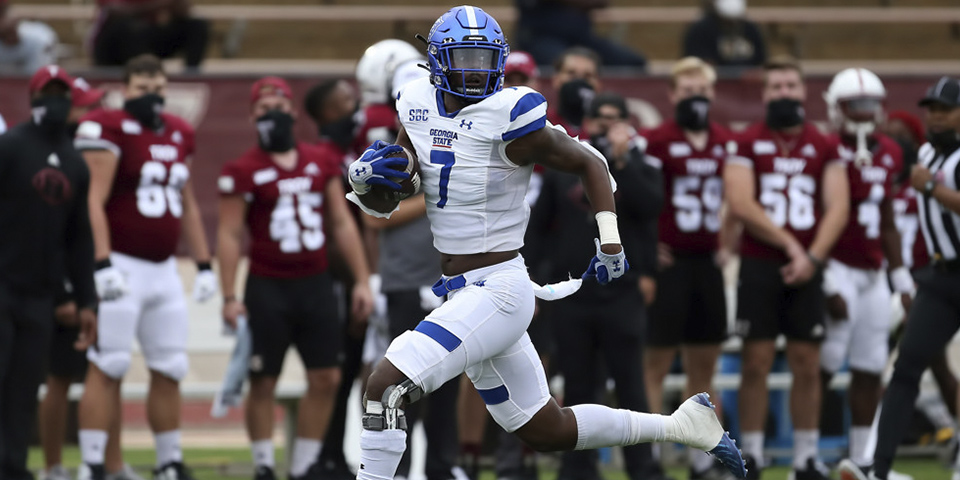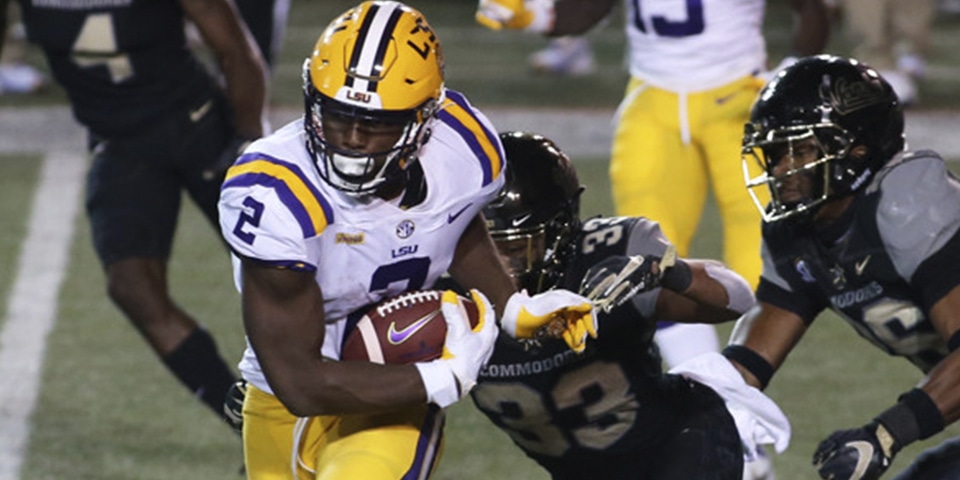Since the earliest days of football, defenses have prided themselves on stopping the run. The run served as the predominant means to move the football, and the ground game a mark of toughness amongst the men who played the sport. Without it, offenses had to resort to the pass, a risky, wimpy proposition almost certain to fail. As Straight T aficionado Woody Hayes said, “Three things can happen when you throw the ball, and two of them are bad.”
With the run as the method du jour, coaches designed defenses prioritized to stop it. The 6-2 and 5-3 ran rampant throughout college and professional football, putting a minimum of eight players in the box to stop the Single Wing, T formation, and other ground attacks thrown their way. Defending the pass came in a distant second for all defensive coaches, as evidenced by the paltry three players in the secondary for those predominant schemes.
But as the game aged the orthodoxy changed. With Don Coryell, Bill Walsh, Lavell Edwards, and many others as head coaches, passing proliferated. As the years went by, teams threw the ball more and more, setting records for yards and points year after year. Defenses gradually adjusted to their new reality, moving from the 6-2 and 5-3, to the 4-3 and 3-4, and currently continuing to migrate into the 4-2-5 and 3-3-5.
But even as the pass reigns supreme in the modern game, coaches still fear the inability to stop the run. More defensive backs means fewer defensive linemen, and fewer defensive linemen means fewer bodies to fill the gaps, disrupt the run, and physically prove the defense’s dominance over the offense. Defenses designed to combat the pass have received, and in some instances rightfully earned, this fear as a reputation. But with a defense ranked 2nd in Total Points per play (PS Per Play) against the run and the pass, Marshall has proven that this need not be the case.
To emphasize defending the pass, Marshall defensive coordinator Lance Guidry has built the defense to have a variety of looks from similar personnel. The Herd play their base defense with five defensive backs 70% of the time, with a linebacker taking the 5th defensive back’s place the another 28%. The scheme hardly changes even as the personnel does, Guidry uses substitutions to match the offense’s players more than to run different plays.
Perhaps most jarring to the traditionalist, the Herd play with only two down linemen 69% of the time, the 3rd highest rate in the FBS. Contrary to the conventional wisdom, defenses playing a majority of snaps with two defensive linemen added more expected points than those with three against the run. Even more bizarrely, those with three did better than those with four.
Nickel defenses with two down linemen should not have enough box players to defend the run. But the Herd have the 7th highest average of men in the box, at 6.73. Through their coverage scheming, Marshall can defend the pass first while still stifling the run at an elite level.
Marshall runs Cover 1, 3, and 4 over 20% of the time and has the ninth-highest variance in terms of coverages called. Cover 1 serves as the primary man coverage and Cover 3 the primary zone, while Cover 4 uses skills from both. All three do well in their own right defending the pass, ranking in the top-11 in PS Per Play when ranked among similar coverages from other FBS teams. For Marshall, Cover 1 does the best, saving .45 Points Per Play. Cover 3 saves .25 Points Per Play and Cover 4, .42.
But for how well each coverage does against the pass, Marshall’s alignment within them all allows the Herd to also defend the run at such a high level. Within the one-high shell, the Herd have a man and zone coverage they can execute while also matching the offense’s personnel in the box. With Cover 1, the Herd can align and cover all receivers while still having more in the box than the offense can handle:
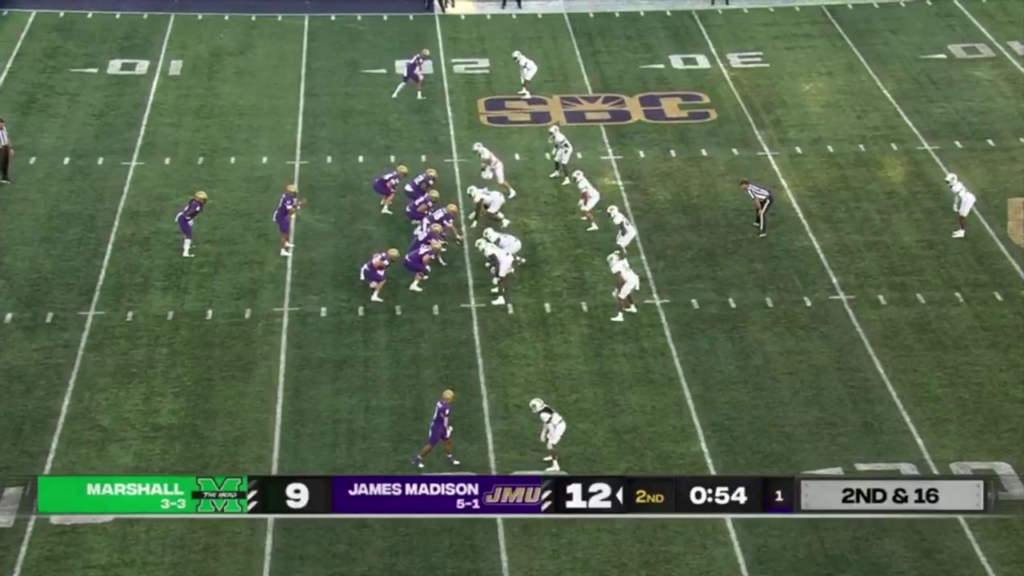
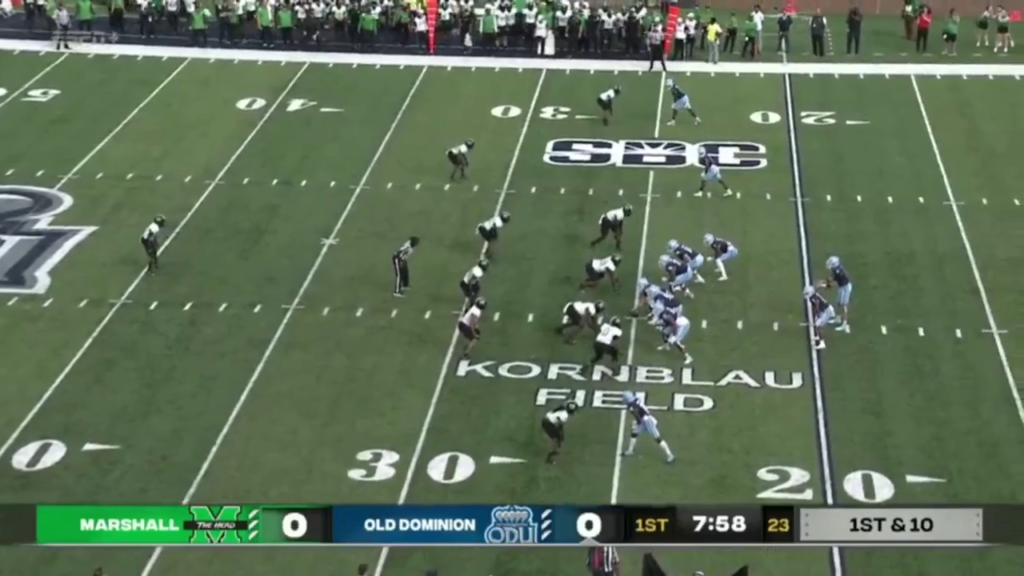
Playing Cover 3, Marshall’s secondary can align either over receivers or space, as well as have a wider read of the offense, while the rest of the defense will have the requisite numbers to stop then run.
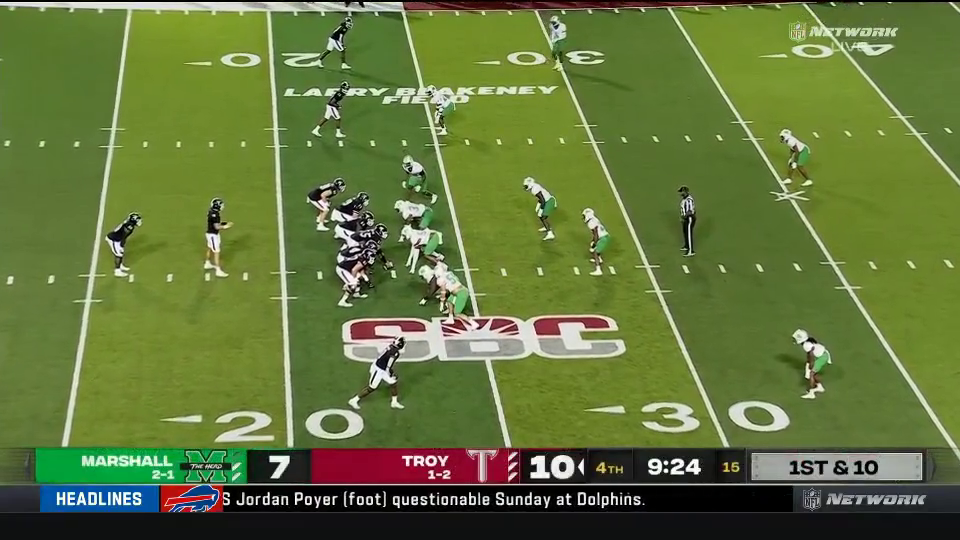
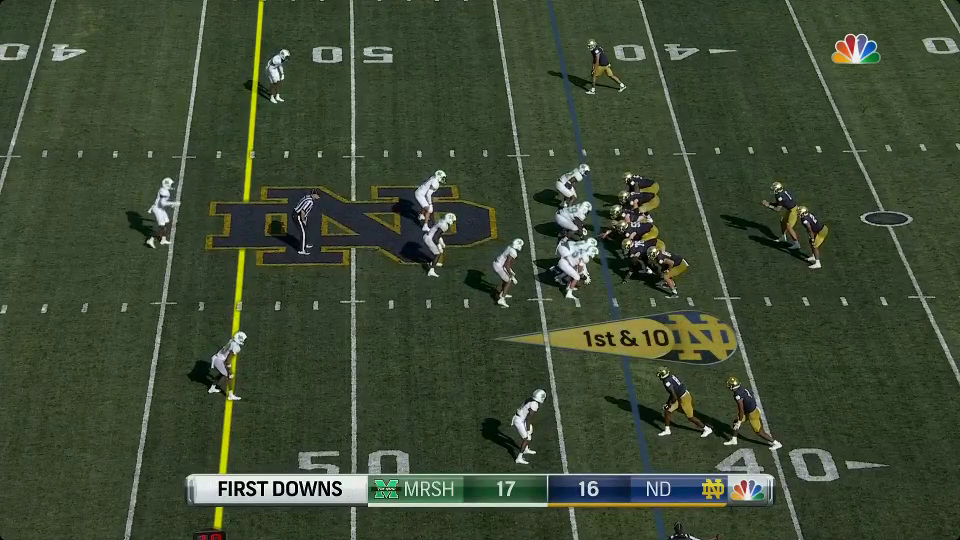
Though Cover 4 typically has two deep safeties instead of one, it does have the safeties play closer to the line of scrimmage, enabling them to play the run better than in other coverages. Additionally, with the half-field split coverages the Herd utilize within their Cover 4 looks, they can adapt to uneven formations that the offense offers, able to keep a full box while soundly matching passing patterns.
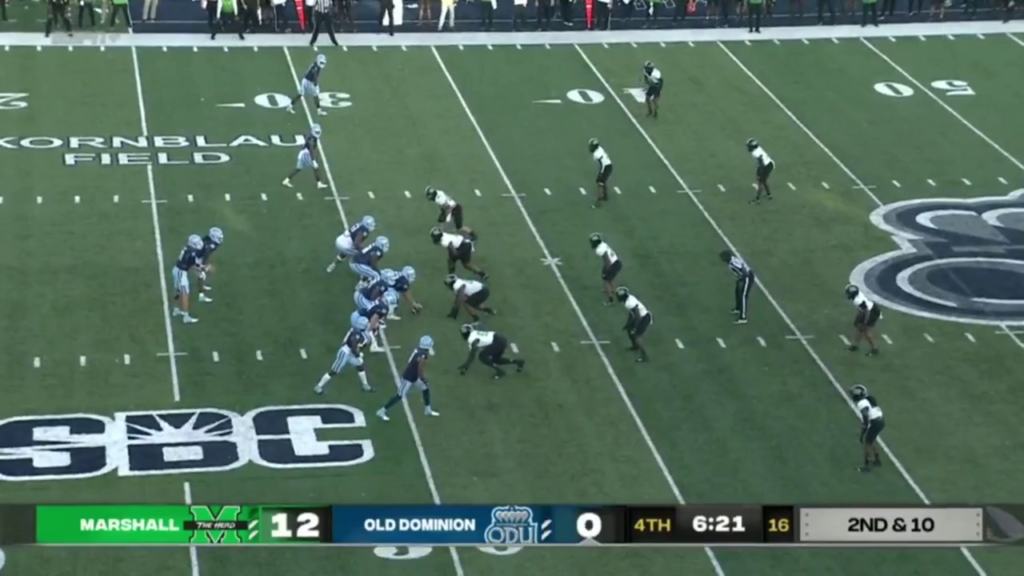
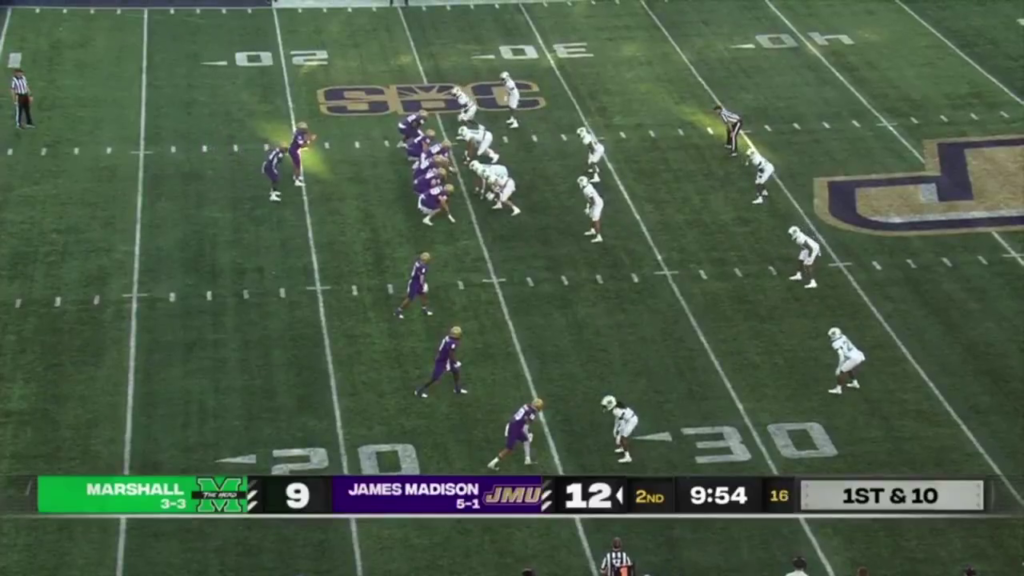
Praising the scheme does not tell the whole story. Marshall has both fundamentally sound and talented players. The Herd’s rate of broken or missed tackles ranks 2nd in the FBS (5.6%), and when only rushing four or fewer they rank 9th in sack percentage (14.8%). Football intelligence runs high too, as shown here when Micah Abraham (#6) fools the quarterback by faking coverage in the flat, only to turn and undercut the throw to the corner for an easy interception.
Between the array of coverages and the players at his disposal, Lance Guidry has married scheme and talent to produce great results. Even as Marshall’s offense underwhelms, the defense continues to perform, allowing only 15.6 points per game. Should Guidry’s unit play its final three games as strongly as its first nine, Marshall will likely go bowling for the sixth straight year thanks to the defense alone.

